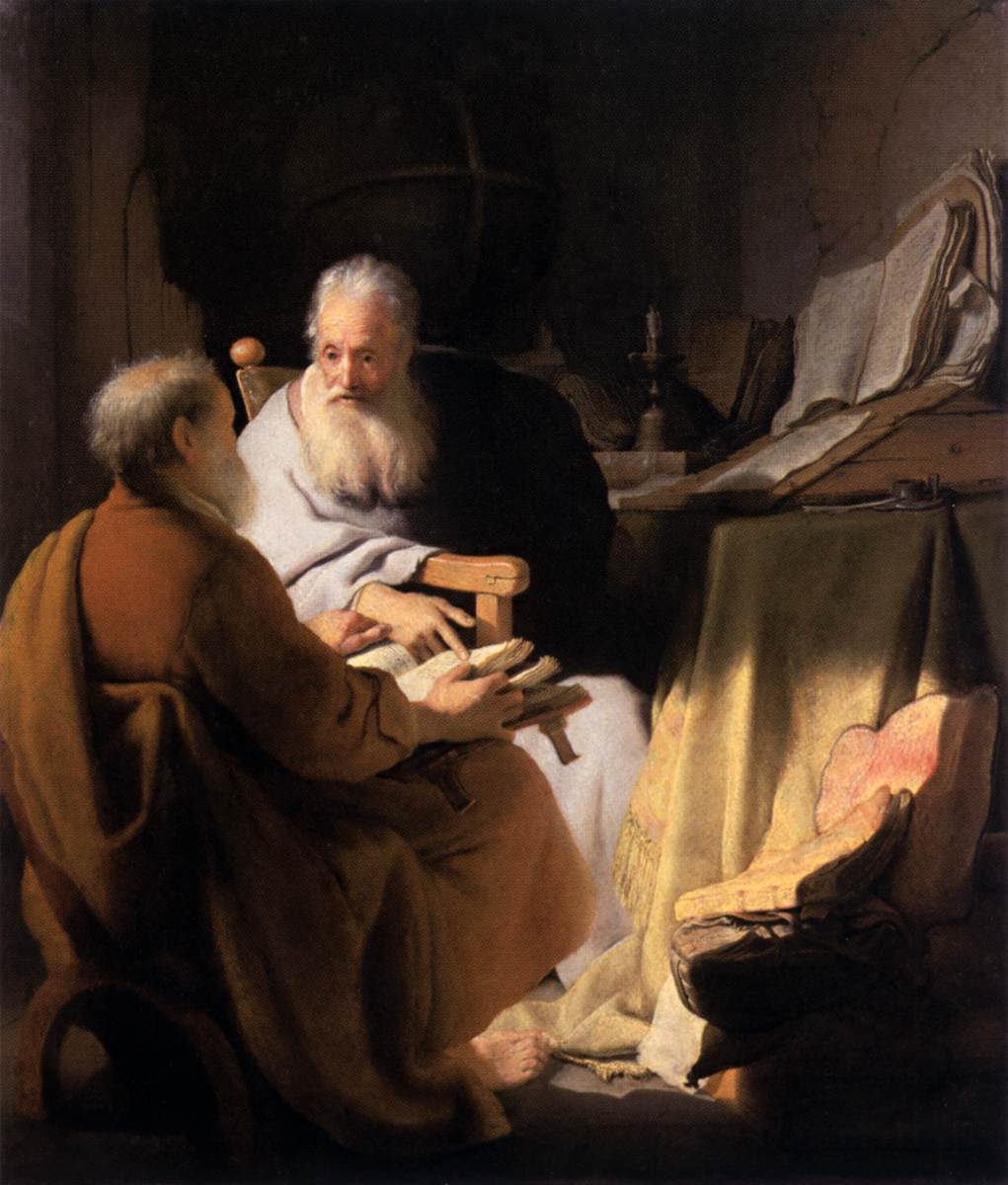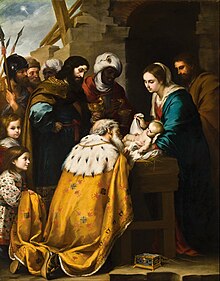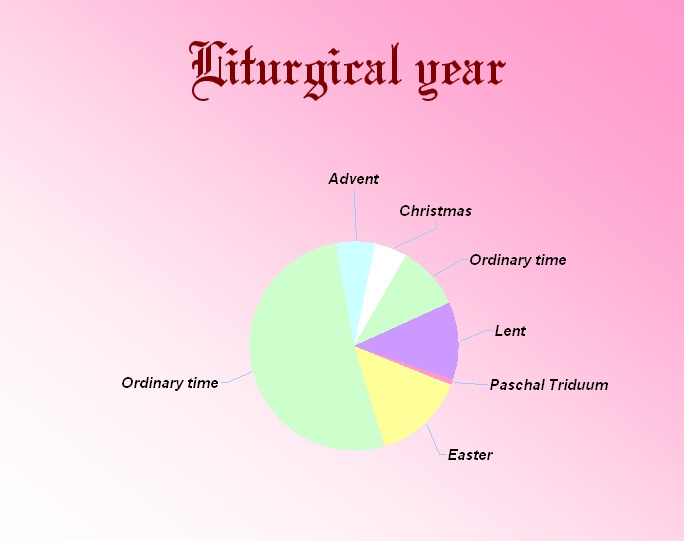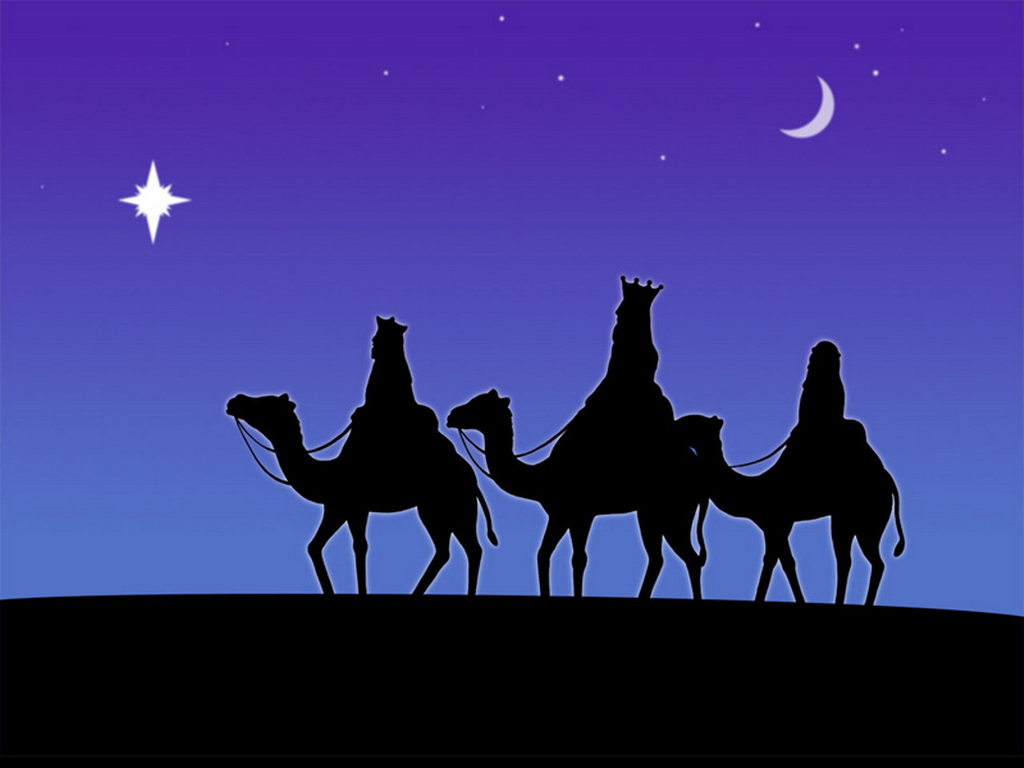
“Two Scholars Disputing” – Peter and Paul – but they ended up working for the common good…
* * * *
 January 27, 2017 – In the middle of summer – June 29 to be exact – there’s a Feast Day that celebrates both Saint Peter and Saint Paul, together. But on the other end of the church year – here, in the dead of winter,* as seen at left – good Christians remember both of these saints separately, on January 18 and January 25:
January 27, 2017 – In the middle of summer – June 29 to be exact – there’s a Feast Day that celebrates both Saint Peter and Saint Paul, together. But on the other end of the church year – here, in the dead of winter,* as seen at left – good Christians remember both of these saints separately, on January 18 and January 25:
On January 18 we celebrate the Confession of Peter: “Thou art the Christ, Son of the Living God.” A week later on January 25 we celebrate the Conversion of St. Paul. Then comes June 29, when we celebrate both men…
See Peter, Paul – and other “relics.” See also the post from last January 20 (2016), Peter confesses, Paul converts. The latter noted that both saints were martyred – killed by the Roman authorities – at about the same time and place. (In Rome, around 65 A.D.)
 That post also noted that these two “Pillars of the Church” took completely different paths to the same destination. (And often had “spirited” disputes. See Galatians 2:11-14, and 2d Peter 3:16.)
That post also noted that these two “Pillars of the Church” took completely different paths to the same destination. (And often had “spirited” disputes. See Galatians 2:11-14, and 2d Peter 3:16.)
On the one hand, Peter was one of the original 12 disciples, and the first “to confess Jesus as Messiah.” (See the matching accounts in the three Synoptic Gospels, illustrated at right: Matthew 16:13-20, Mark 8:27–30 and Luke 9:18–20.)
On the other hand, Saul of Tarsus – later “Paul” – started out as the most ardent enemy and persecutor of the early Christian Church. (See for example Acts 8:3: “Saul was going everywhere to destroy the church. He went from house to house, dragging out both men and women to throw them into prison.”)
In other words, Peter came to his position of authority from “inside the church.” Paul on the other hand was pretty much dragged kicking and screaming into his position of authority.
In plain words, Paul’s Damascus Road experience “changed him from a Christ-hating persecutor of Christians to the foremost spokesman for the faith.” Put another way, Paul was led by God’s grace, from being the most hated and feared enemy of the church to becoming “one of its chief spokesmen.” (See Conversion of St. Paul, emphasis added.) In further words, these two former enemies were brought together – by God – to work together for the common good:
In philosophy, economics, and political science, the common good (also commonwealth or common weal) is a term of art, referring to either what is shared and beneficial for all or most members of a given community, or alternatively, what is achieved by citizenship, collective action, and active participation in the realm of politics and public service.
Which leads to this question: What would happen if two or more American conservative and liberal politicians today could likewise come together and work for the common good?
Which brings up the topic of being “restored.” In one sense it means bringing “back to health, good spirits, etc.” Or “to bring back to a former, more desirable condition.” So say what you want about the bad old days, they never seemed to be this bad.
 For one thing, there once was a time when the most ardent politicians felt free to “sup with their enemies.” Like Ronald Reagan and Ted Kennedy – at right – were able to do, despite their vastly different political views. For example, Kennedy said of Reagan: “He’s absolutely professional. When the sun goes down, the battles of the day are really gone.” Or as one writer said of Kennedy, having learned to “operate within the politics of symbolism:”
For one thing, there once was a time when the most ardent politicians felt free to “sup with their enemies.” Like Ronald Reagan and Ted Kennedy – at right – were able to do, despite their vastly different political views. For example, Kennedy said of Reagan: “He’s absolutely professional. When the sun goes down, the battles of the day are really gone.” Or as one writer said of Kennedy, having learned to “operate within the politics of symbolism:”
Heated rhetoric was part of the game of government. When the day was over, win or lose, everyone could have a drink together.*
And that’s the kind of political “Restoration” I’d gladly welcome. Then too, it turns out that both Peter and Paul got “restored,” again, each in his own way. See Doubting Thomas – and Peter Restored, which noted that Peter got “restored to grace” after basically turning on Jesus, by denying Him three times. And as to Paul being both transformed and restored:
As a result of that transformation, the Apostle Paul got transmogrified. I.e., changed from being the early Church’s deadliest enemy to being second only to Jesus in the history of that early Christian Church.
See Paul restored – from the Damascus Road. Which leads to this question:
Wouldn’t it be nice if we too – here in America – could also be “restored?” To a time when people of all types and backgrounds worked together for the “common good?”
Which is of course the main job of a good Christian. See 2d Corinthians 5:18, that God “reconciled us to Himself through Christ, and gave us the ministry of reconciliation.”
* * * *

“Ananias Restoring the Sight of St. Paul” – after his Damascus road experience…
* * * *
The upper image is courtesy of www.canvasreplicas.com/Rembrandt.htm. See also Two Scholars Disputing by REMBRANDT Harmenszoon van Rijn.
“Note” also that an asterisk in the main text indicates a statement supported by a reference detailed further in this “notes” section. Thus, as to the “winter” image, it is courtesy of Wikipedia. The caption: “A snow-covered park in Pittsburgh, Pennsylvania, during winter.”
Re: The common good. See the Wikipedia article, which added this:
[T]he common good became a central concept in the modern tradition of Catholic social teaching, beginning with [a] papal encyclical by Pope Leo XIII, issued in 1891. This addressed the crisis of the conditions of industrial workers in Europe and argued for a position different from both laissez-faire capitalism and socialism… Pope Leo guarantees the right to private property while insisting on the role of the state to require a living wage.
Re: Heated rhetoric as “part of the game.” (Of politics.) See On Reagan, Kennedy – and “Dick the Butcher,” in my companion blog. The Reagan-Kennedy photo is courtesy of boston.com/bigpicture … ted_kennedy. The caption: “Senator Edward Kennedy talks with President Ronald Reagan, left, on June 24, 1985, as they look over an American Eagle that graced President John F. Kennedy’s desk during a fund raising event for the John F. Kennedy Memorial Library at McLean, Virginia. (AP Photo/Charles Tasnadi).” The quotes – of Kennedy and Reagan, and about Kennedy and “heated rhetoric” – are courtesy of Battle for Justice: How the [Robert] Bork Nomination Shook America, by Ethan Bronner, Anchor Book edition (1989), at pages 103-104.
(And incidentally, “Dick the Butcher” was the character in William Shakespeare‘s play, “Henry The Sixth, Part 2,” who famously said, “The first thing we do, let’s kill all the lawyers.”)
The lower image is courtesy of Conversion of Paul the Apostle – Wikipedia, the free encyclopedia. The full caption: “‘Ananias Restoring the Sight of St. Paul’ (c.1631) by Pietro da Cortona.” See also Ananias of Damascus – Wikipedia, which noted his name means “favored of the LORD.” The actual restoration of Saul-Paul’s sight was described in Acts 9:17-19 NIV:
Placing his hands on Saul, he said, “Brother Saul, the Lord – Jesus, who appeared to you on the road as you were coming here – has sent me so that you may see again and be filled with the Holy Spirit.” Immediately, something like scales fell from Saul’s eyes, and he could see again. He got up and was baptized, and after taking some food, he regained his strength.

 Each year, January 6 is the traditional day to celebrate the
Each year, January 6 is the traditional day to celebrate the  Which brings up
Which brings up  That is, the 2017
That is, the 2017  The most common names given the three are:
The most common names given the three are: 